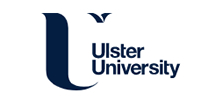Course Summary
Course Category: Northern Ireland (HET) - Apply through UCAS
BA Hons Textile Art, Design and Fashion explores the breadth of skill, technology, knowledge, heritage and cultural significance associated with contemporary Textiles and Fashion. Through the five specialist areas, embroidery, knit, garment construction, print and weave you will be challenged to explore both tradition and innovation supported be expert technical and academic staff. In well equipped workshops we support you to work ambitiously and creatively, selecting the pathway most suited to your strengths and future ambitions as either a Textile Artist, Textile Designer or Fashion Designer. Employability is very important to us so we support you to make the right decisions throughout the course by identifying clear career goals and strategies in professional practice modules, placement opportunities and competitions. The Course also provides the (optional) opportunity to take a placement year due to our excellent industry connections.
College Link
Career Sectors
This course prepares you for working in the Career Sectors below. Follow the links to get a fuller understanding of the sectors you are preparing for.
Language Options
Entry Requirements
UCAS Tariff Points: 104
or
UCAS Grades: 1 Distinction; 7 Merits
Leaving Cert entry requirements:
English and Maths at O4/H6 or above.
Leaving Cert Grades and UCAS Points
The following table may help you calculating your Leaving cert grades into UCAS points:

If you believe the data above to be incorrect, please let us know at [email protected] - thank you.
QQI / FET Links
Points Calculator for QQI Awards:
Details of the QQI scoring system and a points calculator can be found HERE
The Student
Career Interests
This course is typically suited for people with the following Career Interests. If these interests do not describe you, this course may prepare you for work you may not find satisfying.
Creative
Creative people are drawn to careers and activities that enable them to take responsibility for the design, layout or sensory impact of something (visual, auditory etc). They may be atrracted to the traditional artistic pursuits such as painting, sculpture, singing, or music. Or they may show more interest in design activities, such as architecture, animation, or craft areas, such as pottery and ceramics.
Creative people use their personal understanding of people and the world they live in to guide their work. Creative people like to work in unstructured workplaces, enjoy taking risks and prefer a minimum of routine.
Career Progression
Graduates will be equipped to pursue a range of career paths within an increasingly diverse field as self employed and freelance textile artists, designers, and makers of craft objects. For those focusing on business and industry they will work as designers, buyers, product developers and design marketing executives. For those in the public and private sectors they will find careers as arts officers, educators, workshop coordinators, community artists, curators and cultural commentators. Others will choose to become freelance textile artists, designers and makers of functional and non functional artworks, selling their work through art and craft markets, online, or through agents. They will undertake private and public commissions, residencies and will adopt a portfolio approach to building a career.





